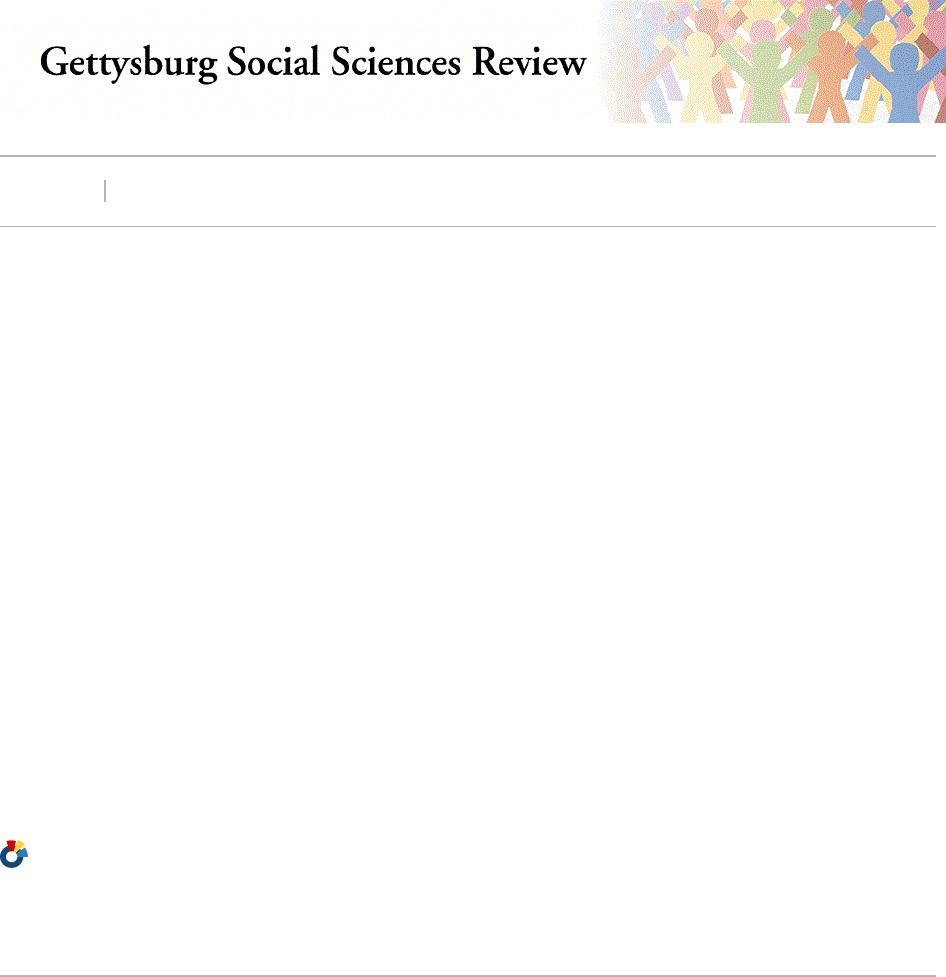
Gettysburg Gettysburg
Social Social
Sciences Sciences
Review Review
Volume 5 Issue 1 Article 3
Naturalistic Child Observation Naturalistic Child Observation
Rachel Bradley
University of Athabasca, Athabasca
Follow this and additional works at: https://cupola.gettysburg.edu/gssr
Part of the Behavior and Behavior Mechanisms Commons, and the Social and Behavioral Sciences
Commons
Share feedbackShare feedback about the accessibility of this item. about the accessibility of this item.
Recommended Citation Recommended Citation
Bradley, Rachel () "Naturalistic Child Observation,"
Gettysburg Social Sciences Review
: Vol. 5 : Iss. 1 ,
Article 3.
Available at: https://cupola.gettysburg.edu/gssr/vol5/iss1/3
This open access article is brought to you by The Cupola: Scholarship at Gettysburg College. It has been accepted
for inclusion by an authorized administrator of The Cupola. For more information, please contact

Naturalistic Child Observation Naturalistic Child Observation
Abstract Abstract
Among the many different research methods available naturalistic observation is one of the oldest forms.
In this paper advantages and disadvantages of naturalistic observation will be discussed, followed by
observations of two preschool children to determine which developmental stage they place in Piaget’s
cognitive development theory. The results found that each child 7t within Piaget's cognitive development
theory with each exhibiting different spheres of the preoperational stage. Further research could look at
gender differences or certain behavioral incidences only.
Keywords Keywords
Naturalistic, Piaget, Preoperational stage
This article is available in Gettysburg Social Sciences Review: https://cupola.gettysburg.edu/gssr/vol5/iss1/3

24
Naturalistic Child Observation
Rachel Bradley
(University of Athabasca, Athabasca)
25
Abstract: Among the many different research methods available, naturalistic
observation is one of the oldest forms. In this paper advantages and
disadvantages of naturalistic observation will be discussed, followed by
observations of two preschool children, to determine which developmental stage
they place in Piaget’s cognitive development theory. The results found that each
child fit within Piaget's cognitive development theory, with each exhibiting
different spheres of the preoperational stage. These findings will be discussed
against existing literature. Further research could look at gender differences or
certain behavioral incidences only.
26
Introduction
Naturalistic observation is one of the oldest methods in scientific
research, used by the likes of Charles Darwin and Ian Pavlov. This type of
observation is descriptive research that aims to observe and record behavior in
real-world settings, without manipulation or control over the situation. All theories
emphasize some form of observation, whether in a laboratory or natural setting.
Ethological theory, a branch of behaviorism, places the strongest emphasis on
naturalistic observation, biological in origin. Ethology stresses that behavior is
strongly influenced by biology, which is tied to evolution and is characterized by
critical or sensitive periods (Santrock et al., 2015). This type of research cannot
prove what causes a specific behavior but can give important information about
child behavior tying into current theories or possibly challenging pre-existing
theories.
Therefore, naturalistic observation differs from an experimental approach
in that it looks to observe people in their natural environment test or verify
previous research. Experimental research studies causality, the cause, and effect
of behavior, in which independent variables are manipulated to see if they cause
an effect on a dependent variable.
Further, naturalistic observation is a non-experimental study in which
behavior is systematically observed and recorded. This study is non-
experimental because nothing is manipulated or controlled hence we cannot
arrive at a causal conclusion using this approach. The study to be performed on
the participants of this paper is undisguised naturalistic observation (Price et al.,
2017, pp 132-133). The participants are made aware of the researcher’s
presence and the monitoring of their behavior. This is true for the parents of the
27
participants, but not blatantly to the participants themselves, reducing reactivity
or changes in the subject’s behavior.
With any study validity is important. This study contains a number of
different types of validity. External validity relates to generalization and includes
population and ecological validity. Population validity describes how well the
sample used can be extrapolated to a population as a whole. The study
discussed below cannot be generalized to cover all children as the sample size,
being only two, is not representative of the population. Ecological validity looks at
the testing environment and determines how much it influences behavior
(Shuttleworth, 2009). This naturalistic observation study has high ecological
validity as the children are accustomed to the researcher’s presence.
As with any method, naturalistic observation comes with its own set of
advantages and disadvantages. The main advantages are high ecological and
external validity, meaning that the results of such observations can be generalized
to real-world situations. Natural observation allows for the study of things that
cannot be manipulated in a laboratory setting due to ethical concerns and topics.
In this setting, more genuine behaviors can be observed aiding the validation of
research already conducted (Lombardo, 2015). The disadvantages of naturalistic
observation are occurrences in observer bias, whereby different conclusions are
drawn from observed actions and behaviors. Difficulties arise as the subject may
be aware they are being observed, changing their behavior to fit what they think
the observer wants to see. Another disadvantage is that it is difficult to determine
the exact cause of behavior as there are so many uncontrolled variables at play
(Lombardo, 2015).
In contrast to naturalistic observation, is experimental research which has
its own advantages and disadvantages. The main advantage is that the
28
experimenter has greater control over variables, including whether they are
extraneous or unwanted variables. In this method it is easier to determine cause
and effect relationships, yielding better results for repeat testing and confirming
pre-existing theories (Occupytheory, 2014). The disadvantages of experimental
research are that experiments may not be able to be performed due to ethical or
practical reasons. The artificial design of experimental research can cause
participant bias or unusual behaviors. Experiments are in themselves subject to
human error, in the form of experimenter bias or data collection errors.
Experiments are also very time-consuming and expensive to conduct
(Occupytheory, 2014).
There are a number of different cognitive theories which relate to
conscious thought. Piaget’s cognitive development theory is the one used in this
paper. In Piaget’s theory, he states that children actively construct their
understanding of the world, and go through four stages of cognitive development.
With each underlined with two processes: organization and adaptation.
Organizing experiences with degrees of importance and adapting to new
environmental demands. Each of Piaget’s four stages is age-related and consists
of a distinct way of thinking, each one qualitatively different compared with
another. The four stages are sensorimotor, preoperational, concrete operational,
and formal operational stage (Santrock et al., 2015). However, for the ages of the
children used during this study, only the preoperational stage will be discussed.
The purpose of this paper is to interpret the actual results found whilst
conducting naturalistic observation of two preschool children. Based on the results
the question of whether Piaget's cognitive development theory applies to each
child will be established. The question of whether children of similar age develop
29
at the same rate will be addressed, based on current work and peer-reviewed
literature.
Methods
Setting for Child One
Arrangements were made via Facebook messenger with W’s mother,
Sarah. W is friends with my daughter and everyone has spent lots of time together
since birth. The mother was informed of the reason for the observation; a final
project for a psychology course. The mother said there was no issue and that
morning work best. An appointment was made for November 18th, 2018 at 10:00
AM.
The observation took place in the W’s home. The researcher sat and
talked to the mother to allow W to relax into the situation. The mother was
provided with and signed informed consent. Observations began after fifteen
minutes of casual conversation.
The observation took place in the living room, allowing for a clear view of
the entire room where W was present. W was aware of the researcher’s presence
having formed a good relationship and he did want to keep including the
researcher in his activities. W was informed that the researcher was here for
university work and to ignore them. W stopped engaging in conversation after
being informed.
Observation of Child One
Observation sheet key:
• Red for gross motor skills
• Blue for fine motor skills
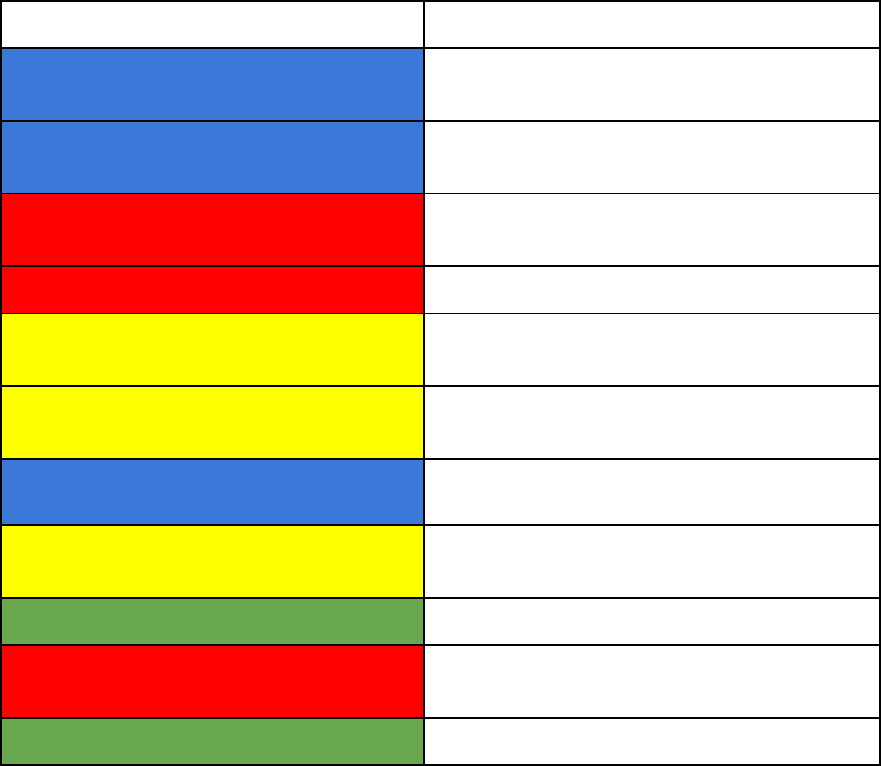
30
• Green for vocal behavior
• Yellow for social behavior
Observation Sheet (Original attached)
Topic 1
Student’s name: Rachel Bradley Child’s name: W
Observation date: 18/11/2018 Child’s DOB: June 14th , 2015
Observation time: 10:15 AM Child’s sex: Male
Observation location: W Home
Child’s Activity
Others Involved and Relevant Events
W holding bread in both hands, sandwich
grip all fingers and thumb.
Brother (Ollie - age 2) present and Mother.
W: Weight 44lbs and height 39 inches
W puts a piece in mouth with left-hand
pincher grip, chews.
W picks up paw patrol helmet, puts on
head with both hands. Barks
W removes helmet and throws on floor
W to mother “Can you put my turtle outfit
on?”
Mother explains “ I’m too big for the outfit”
W to mother “Can you put your feet in
it?”
Mother “Yes”
W still chewing
W to mother “I want you to put the whole
costume on”
Mother “You want to put your costume on?”
W out loud “My turtle is for halloweening”
W picks up every item of the turtle outfit,
holding in arms
W to mother “Can you put outfit on?’
Mother “You want the outfit on?”
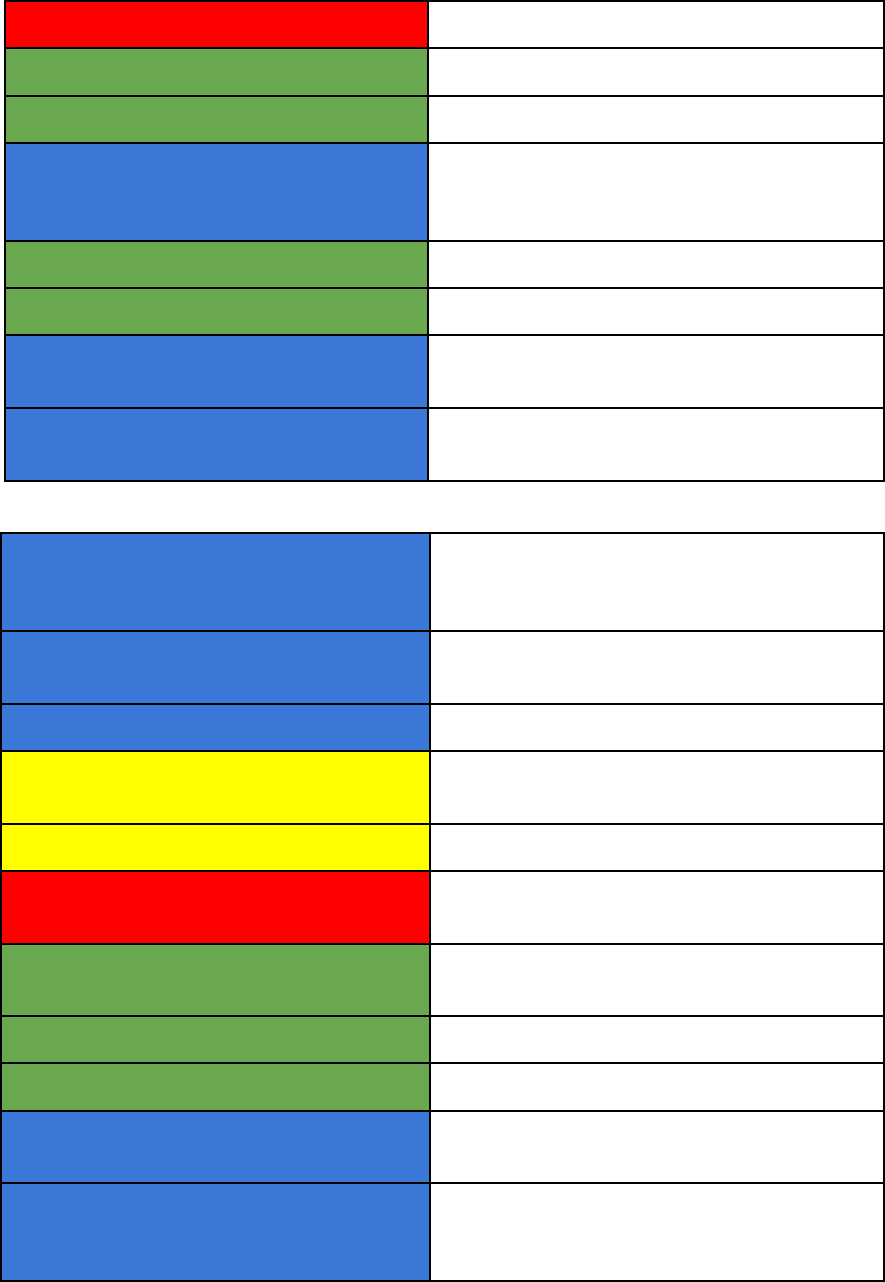
31
W Walks off, saying “heya!”, “heya!”
Mother “Come here I’ll put it on”
W “I got big poops!”
Mother “What are they?”
W “I don’t know you tell me?”
Mother “Muscles not poops”
W sits on floor and puts the helmet on,
lifts helmet with left hand, puts drink to
mouth with right hand.
W “I’m a ninja turtle!”
W “For Halloween”
W takes turtle mask off puts batman
mask on.
W takes batman mask off and puts turtle
mask on.
W tries to put batman masks on top of
turtle mask, this does not work so he
takes the turtle and batman mask off.
W puts batman then turtle mask over the
top.
W rubs left eye
W “Hello, Biol
Mother “Hello, Ollie.
Ollie walks over to W.
W “I stabbed Ollie with my knife”
W lies on his stomach on the floor,
kicking feet, puts face on the floor.
W “Someone pressed a button and leee
down
Mother “Lay down”
W to mother “I need my talking phone”
Mother “Your phone?”
W “Yes, my purple phone”
Mother “You don’t have one”
W picks up orange block from box, with
fingers, shows to researcher.
W grabs a second block green, inspects
the hole that it goes into it and puts block
in, adds blue block to set
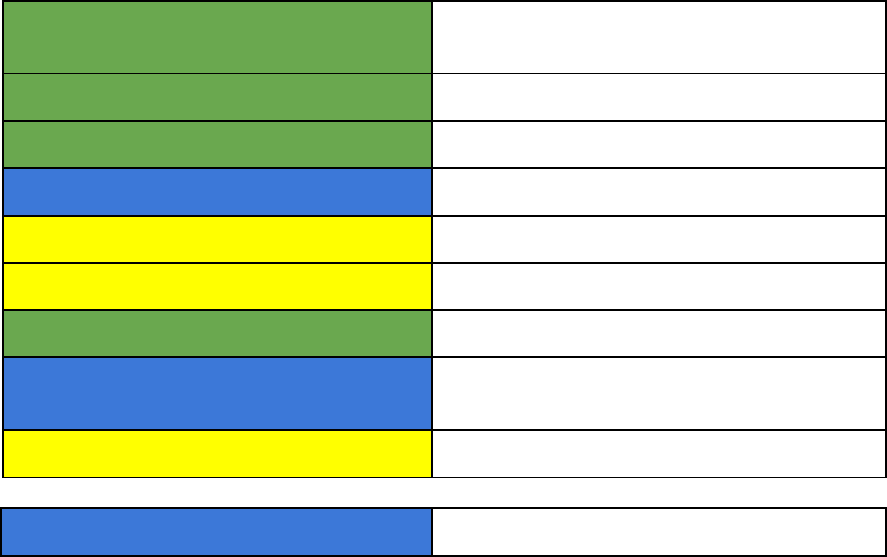
32
W “Making a robot”
Mother “You’re making a robot! Do you want
help?”
W “Yes so we can purr bad guys
Mother “Pew! Bad guys?”
W “Yes, big giant robot”
Mother “Here’s the base”
W adds another block, pushes down
W “How does that base look mommy?”
Mother “That’s good!”
W “How does that look for a base”?
Mother “Very good!”
W “Now I put my block on”
W picks up base to put on top of the
tower
Mother “No, No, the other way round!”
W “Like this?”
W moves tower to top with right hand
Setting for Child Two
Arrangements were again made via Facebook messenger, a second child
was needed for observation. L’s mother Becky was contacted and advised that
the researcher required another child to observe, as part of a final project.
Arrangements were made for the same date, 18th of November, following child
one.
On arrival to the home of L, the researcher made pleasant conversation
with L’s mother and father and was provided with a glass of water. Becky took
the informed consent forms, read and signed them. Becky said, “where would the
researcher like to sit?” All parties were already sitting at the dining table. The
researcher joined them sitting at the head of the table directly opposite L. The
researcher felt nervous and a little awkward but had more confidence having just
completed an observation.
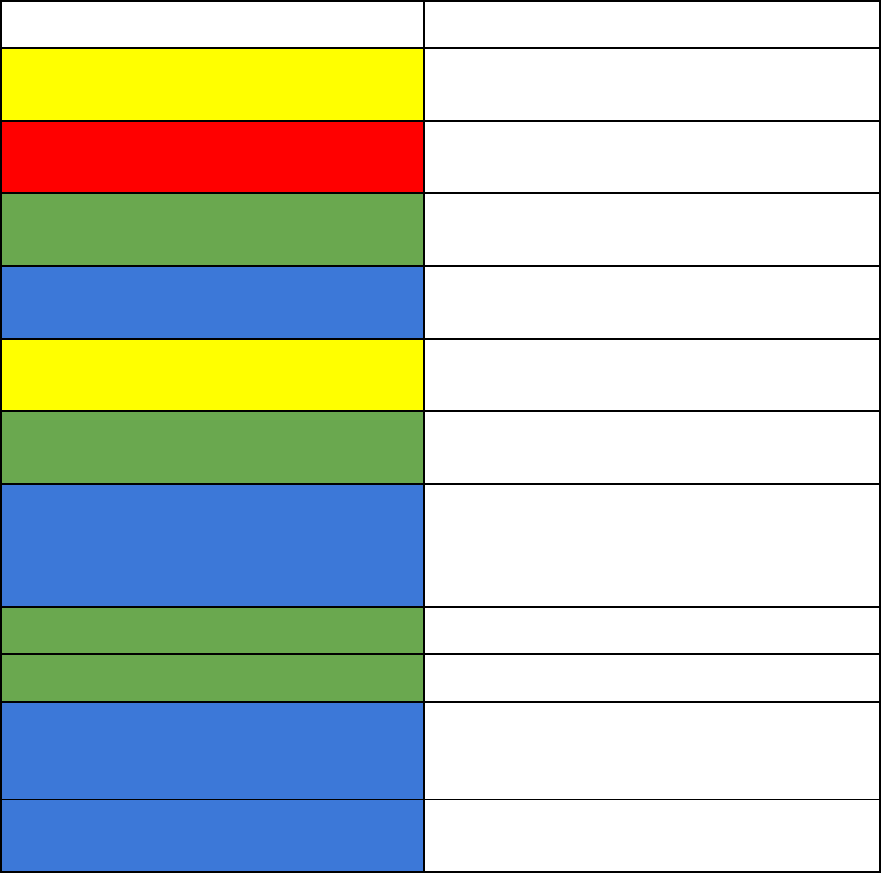
33
Observation of Child Two
Observation Sheet
Topic 1
Student’s name: Rachel Bradley Child’s name: L
Observation date: 18/11/2018 Child’s DOB: November 5th, 2014
Observation time: 11:45 AM Child’s sex: Male
Observation location: L home
Child’s Activity
Others Involved and Relevant Events
On arrival L is doing a jigsaw puzzle
Mother and father present
L: weight 40lbs, height unknown.
L kneeling on a chair over the dining
table
L “I like baby dinosaurs!”
“The yellow one is a baby”
L grabs a puzzle piece with left hand,
moves to right hand
L “hum hum”
Father “Where did you see the puzzle
piece?”
L “The Pterodactyl”
Father “Yes”, Father passes more of the T-
Rex pieces.
L grabs piece with right hand before
looking at it and putting the piece in
correct slot. Holds in pincher in right
hand, leans on flat palm on left hand.
L “Maybe this one?”
Father “Maybe this one?”
L “No!”
L “Yes!” right hand turned sideways
leaning on table, left hand holds piece
and L puts it in the puzzle.
L leans on table with left hand, finds
piece with right, places piece in the
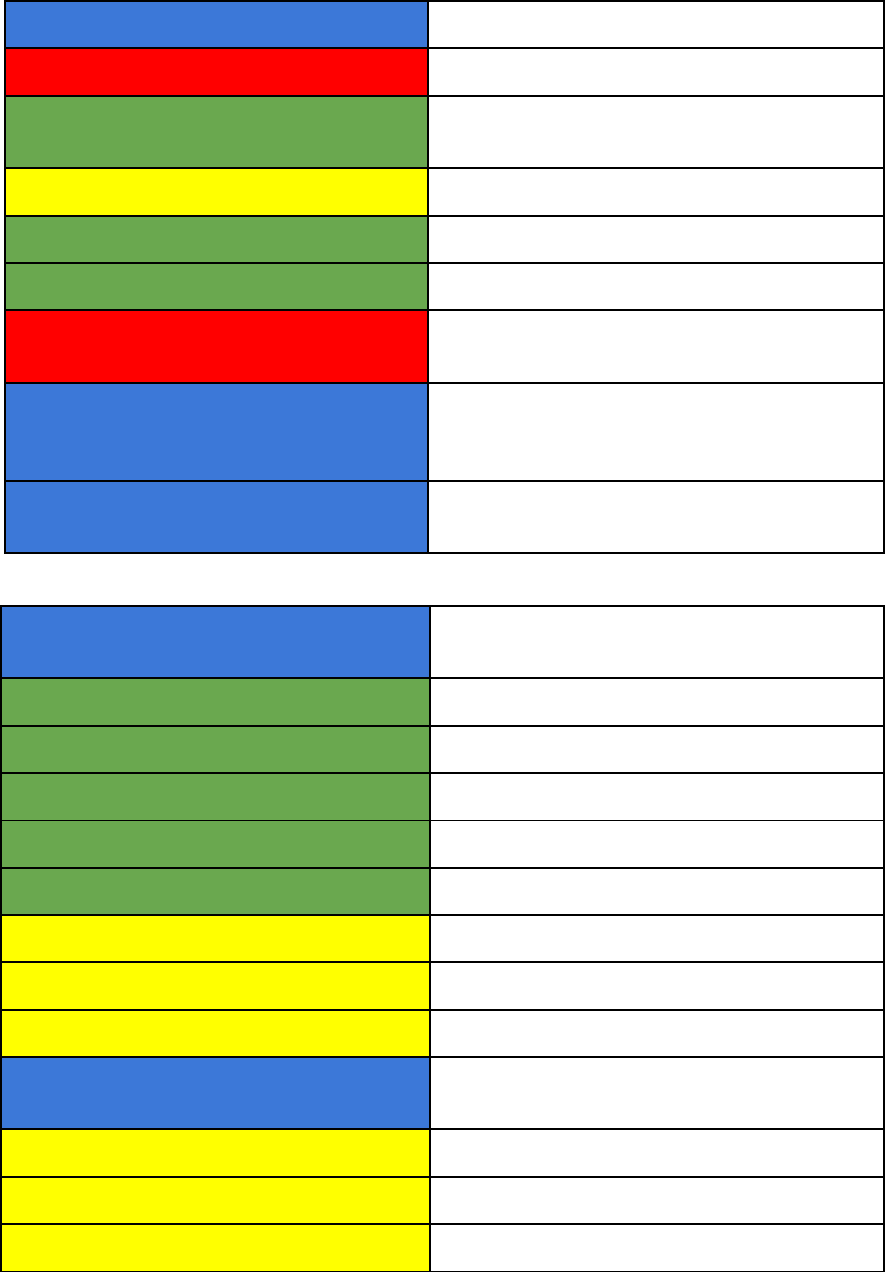
34
puzzle.
L “Yay Yay!” Bangs on table
L “That doesn’t go anywhere Dad, this
one goes here”
Father “Now you have to find this piece”
L Looks at the picture on the box
L “I need a nose” Slips on puzzle
Father “Careful!”
L “Sorry Daddy”
L pokes puzzle piece in slot. It does not
fit, L throws it down.
L “I found another hand for a dinosaur”
picks it up, rotates with left hand
clockwise until it fits.
L Looks at piece, grabs, spins in air,
places in hole.
L Pushes another piece in with two
hands.
L “Papa volcano”
Father “What! “Volcano?”
L “Yes, volcano. Oh No No”
L “Dinosaurs have to be in the dark”
L “Just one dinosaur puzzle”
Mother “You have three”
L “No! I have just one”
L “Say it Mom “Triceratops”
Mother “No I don’t want too”
L “Say it Mom”
L “Say it Mommy”
L Grabs piece, right hand pushes piece in
with thumb
L “I’m finding 3 pieces, places one piece
“Two pieces”, places one piece
L “One” places one more piece

35
L Puts arm in his shirt
Mother “Name them all to me?”
L Right to left. Points to a dinosaur
“Stegosaurus”
L “Dad, what is it called?”
Father “Yes Stegosaurus”
L Play game
Mother “What do you want to do?” Clean
up?
L “No No”, “I need the box”
Mother “I gave you the box”
L Gets the box, starts removing along the
top strip first.
L Then passes a piece to mom to put in
box.
L Then moves to next row moving back
where he started
L “No, No, you put it Mom!”
Mother puts puzzle pieces in box
L “It’s my puzzle so I have to break it!”
L moves to next row going right to left
L “It’s my puzzle”
Mother “OK”
L “My puzzle to break!”
Results
Behavioral categories are easily distinguishable via a color coding
system. With red for gross motor skills, blue for fine motor skills, green for vocal
behavior and yellow for social behavior. Gross motor skills are categorized as
actions that involve large muscle activities, such as arm movements and walking.
Fine motor skills are actions that involve more finely tuned movements, such as
finger dexterity. Vocal behavior is defined as talking or making sounds. Social
behavior is defined as engaging in the opinions of others, acknowledging other
persons, as well as talking to one’s self.
36
Child One
Child one did exhibit good use of gross motor skills. This includes
throwing objects, laying down, getting back up and walking around the room.
Child one shows fine motor skills by performing a sandwich grip with all fingers
and thumbs when eating, pincher grip for putting a piece of bread into his mouth,
chewing, lifting a helmet to take a drink, adding and removing two different
masks, rubbing his eye, grasping blocks and stacking a tower. Child one exhibits
a great deal of vocal behavior, making statements pertaining to events such as
Halloween, asking for help to put an outfit on, stating names of characters,
imagination statements about robots, out loud speech of tasks and incorrect word
usage, which was corrected by his mother. Child one engages in conversations
with his mother, acknowledges the presence of his brother and talks to himself
with either noises or what he is going to do or make.
Child Two
Child two did exhibit good use of gross motor skills. This includes
throwing objects, kneeling on a chair, banging on a table and putting his arm in
his shirt. Child two exhibits a lot of fine motor skill by the nature of the task being
observed. This includes puzzle piece hand switching, pincher gripping and flat
palm, puzzle piece rotation with one hand, pushing with two hands, pushing with
thumb, pointing and methodical right to left puzzle piece removal. Child two
exhibits a great deal of vocal behavior, such as statements of dislikes in the form
of a baby dinosaur, out loud speech of puzzle pieces, statements of what pieces
are needed, statements of needs and wants, correct word usage for naming
dinosaurs. For social behavior child two exhibits such by engaging in
37
conversations with his mother and father and talking to himself with either “hum
hums” or what he is going to do to complete the puzzle.
Discussion
Having looked at the results for both child one and two, it would seem that
both fall into Piaget's cognitive development theory, specifically the
preoperational stage. The preoperational stage is the second developmental
stage, which lasts from about two to seven years of age; when children begin to
represent the world with words, images and drawings. Preoperational thought is
the beginning of the ability to reconstruct in thought what has been established in
behavior. This thought process is further divided into two sub-stages, symbolic
function and intuitive thought (Santrock, Conrad, & Closson, 2015).
Symbolic function is the first substage of preoperational thought and
occurs roughly between the ages of two and four. In this stage, imagination is
present with young children gaining the ability to represent mentally an object
that is not present. This stage has two limitations, egocentrism and animism.
Egocentrism is an important feature of preoperational thought and is described
as the inability to distinguish between one’s own and someone else’s
perspective. Animism is the belief that inanimate objects have lifelike qualities
and are capable of action (Santrock, et al, 2015).
Intuitive thought is the second substage of preoperational thought
occurring between four and seven years of age, when children begin to use
primitive reasoning. Primitive reasoning is known as centration and conservation.
Centration is that of focusing attention on one characteristic to the exclusion of all
others. Conservation is the principle that altering an objects or substances
appearance does not change its basic properties (Santrock, et al, 2015).
38
Young children specific to the age group (age 2-7) observed, make
advances in two aspects of attention, executive and sustained. Executive
attention involves planning, allocating attention to goals, error detection,
monitoring progress on tasks and dealing with novel circumstances. Sustained
attention is the ability to maintain attention to a selected stimulus for a prolonged
period of time (Santrock, et al, 2015).
Child one exhibits aspects of both preoperational thought and sustained
attention. It seems that the child one is on the cusp of advancing from the
symbolic function substage to intuitive thought substage. Child one is expressing
traits found in symbolic function substage, as he has the abilities to represent
mentally an object that is not present. An example of this would be having an
imaginary knife to stab his brother with. One of the limitations of thought in this
stage is animism. Child one does show this trait as whilst making a robot out of
blocks, he then gives the robot the capabilities of action in the form of “pew pew,
shoot the bad guys”.
The primitive reasoning strategies shown in the intuitive thought substage
by child one is conservation. Child one shows conservation as he asks his
mother, whilst playing in his living room during the observation, if she can put a
ninja turtle outfit on. The mother explains that she is too big for the outfit. Child
one then states “can you put your feet in it” This is conservation as although the
outfit is still the same size his mothers feet are smaller and can fit.
With the aspect of attention or more specifically, sustained attention, child
one was able to maintain attention on robot block building for a prolonged period
of time. Child one also shows some of the parameters for executive attention, in
the form of error detention when he puts a block on the wrong way, but not
enough parameters to warrant full executive attention.
39
Child two also shows parameters in both sub-stages, in symbolic
functions sub-stage he shows the limitation of egocentrism as he doesn’t see his
mothers’ perspective. The example being, he states “just one dinosaur puzzle”,
mother states “you have three”, child two shouts “No! I have just one”. In the
intuitive thought substage he exhibits concentration on a number of instances.
The first being when he states “hum hum” when holding and observing a puzzle
piece. The second being when he states “I need a nose”. The final one, when he
states I found another hand for a dinosaur. These are all examples of centration
as the child is focusing on one characteristic to the exclusion of all others,
whether that is a nose or hand.
Child two in the field of attention shows a great deal of executive
attention. In doing such a task as jigsaw puzzle making, this involves many of the
parameters found in executive attention. Child two allocates attention to each
puzzle piece to complete the goal of finishing. In the spotting and correcting of
errors, child two does show this when he finds another hand for a dinosaur, the
child picks up the piece, rotates the piece in his left hand clockwise, until it fits
into the slot. Child two also monitors his progress throughout the task, until
completion. On completion of the jigsaw puzzle his attention then switches to a
new goal of putting the jigsaw puzzle away. Again making a goal, methodically
removing pieces right to left and dealing with difficult circumstances, such as his
mother trying to help.
From the points discussed so far the question of how these findings
contribute to existing literature will follow.
Keane and Griffin (2018) state that in using Piaget’s cognitive
development theory as a theoretical framework, summative and formative
assessment types can be used to increase self assessment strategies. With the
40
latter offering information on how learning and teaching can be improved. With
regard to self-assessments they can inform learning but may be age related and
environmental in origin. Piaget’s theory is characterized by distinct cognitive traits
which render certain children more likely to make inaccurate self-assessments.
The preoperational stage discussed in this study does in fact result in inaccurate
self-assessments due to egocentricity. Child two of this study is observed
displaying egocentrism, in not seeing his mothers’ perspective. When looking for
improvements or potential differences in children, a Piagetian assessment similar
to the one shown in this current study could be used to see where a child places
and what their learning capabilities could be.
In the study by Keane and Griffin (2018) they applied Piaget’s theory with
caution, where children’s ages were used as a proxy for the development stage,
in recognition of the flaws associated with stage theories of development.
However, when looking at the method in their study, the children used for the
preoperational stage were probably more on the concrete operational stage as
they are aged, seven to eight years old. The preoperational stage is between two
and seven years old, this may have skewed their data. The ages of the
participants used in this study fall perfectly within Piaget’s age range and have
even been able to distinguish between the two sub-stages; symbolic function and
intuitive thought, in the participants.
In the paper by Smith (2018), Piaget’s main argument was that from
infant to savant, all knowledge is organized and re-organized through its rational
formation, which enables its development to become more powerful knowledge.
This argument is seen not only in Piaget’s stage theory but in this study, by child
one and two both exhibiting different spheres of the same stage.
41
Piaget’s studies of infancy were based on journal writing over seven
years, comprising 1200 pages of notebooks and 10,000 observations and
experiments of his three children. He made a commitment to developmental
epistemology (Smith, 2018). Piaget himself, observing his own three children,
became the inspiration for his cognitive development theory. He too, found
difficulty generalizing his findings to a larger population but he is still a leading
figure in cognitive and developmental psychology today ("Importance of Jean
Piaget's Work and Findings", n.d.). For the same reason, the small sample size
seen in this study should not be a deterrent to the insightful use of Piaget’s
cognitive development theory.
Piaget grappled with two different challenges for the theory of cognitive
development. The first is explaining the human conceptual repertoire.
Understanding the acquisition of any specific concept require specifying the
innate primitives, and the processes through which they are transformed, through
learning, into the adult state. Thus conceptual development includes episodes of
change in which new representational resources are constructed, which in turn
permits thoughts previously unthinkable. The second challenge is characterizing
the domain of general cognitive resources that make learning possible. That is
explaining developmental changes in cognitive architecture. In one study on
adults with Williams Syndrome provided powerful evidence that a huge database
of factual knowledge does not lead to conceptual change (Carey, Zaitchik &
Bascandziev, 2015).
Advancements in various fields have allowed us to go well beyond
Piaget’s theory concerning the learning mechanisms for conceptual repertoire.
Neo-Piagetian research aims to correct weaknesses in Piaget’s stage theory,
which proposes that people develop through various stages of cognitive
42
development, by looking into developments in working memory capacity.
Working memory capacity increases with age, the ability to represent more
complex conceptual structure constitutes entering into a new stage of
development. Another top-down process, executive function plays into many
different cognitive functions such as planning, self control and sustained attention
(Carey, Zaitchik & Bascandziev, 2015). Both child one and child two of this study,
exhibit working memory and executive function, specifically sustained attention.
Child two shows an increased amount of sustained attention, which may be due
partly to the task being performed or his age when compared to child one; a
difference of seven months.
Piaget was among the first to help us understand the benefits of more
authentic testing among children. He stated that every child approaches
problems and views experience through the lens of prior experiences. He
encouraged testing as a means of focusing on where a child is in the thinking
process – not on whether the child is right or wrong (Johnson, 2017). This study
is authentic in that it was purely observational; not testing or guiding the
participants in any way, documenting the child’s thought process.
The findings in this paper contribute to existing literature as the method
used can be easily transferred to other age groups, genders and stages of
development, allowing for subsequent child development assessment or Piaget
theory confirmation.
Conclusion
This study was performed as part of a final project for a developmental
psychology course, observational in design. This research aimed to observe
preschool children to identify if they effectively place within Piaget’s cognitive
43
development theory, and if so, whether children of similar age develop at the
same rate, cognitively.
As stated by Christensen et al. (2011) scientific observation requires an
important set of skills. The limitations of this study may fall partly on the
researcher themselves. For instance, the researcher would have practiced
writing and observing prior, as once you are in the midst of doing the observation
it becomes apparent that it is a lot harder than anticipated. Adjustments may
have been made to the informed consent forms to include audio recordings,
which would have been transcribed later. Hence, visual notes would have been
made, followed by audio, or perhaps dictation of the observations.
The methodological approach used in this study was effective in
highlighting the four behavioral categories stated; gross motor skills, fine motor
skills, vocal behavior and social behavior. While the sample size limits the
generalizability of the results. This approach provides new insights into the ease
of categorizing behavioral incidences in preschool children. The key learning
points gained from the study, in relation to children and development, are that it
does seem that children of similar age hit key milestones of learning at around
the same time. It was quite eye opening to think of the amount of development
we, as humans, go through from birth to adulthood.
The approach taken was one of observation in a natural setting. It was
expected that the children would fall within the second stage of the Piagetian
theory, preoperational thought, based on their ages. The behaviors of the
children were expected for the preschool age selected and they tied nicely into
Piaget's cognitive development theory. It was found that although there was only
an age difference of seven months between the participants, there were marked
44
differences between the children furthering my confidence in Piaget’s theory. The
results of this study did match my expectations overall.
The findings of this study show that with good knowledge of a theory of
interest, a well conducted observational study can be achieved. The main points
to be included when undertaking a Piagetian-like study include the correct age
ranges of the participants, behavioral categories that are easily identifiable and
conclusion forming.
As seen in the literature review above Piaget’s theory was made possible
by observing, documenting and interpreting the results, to arrive at a plausible
and tangible conclusion. This was achieved in this study, adding to Piaget’s
cognitive development theory.
To better understand the implications of these results, future studies
could address literacy levels of Piaget’s stage transition in children. Other
research could be done via structured observation, showing an interest in a
limited set of behaviors. The study does show somewhat of a gender bias
towards boys; therefore further studies could either observe girls and compare
findings or do a mix of each sex. In light of these strengths, limitations and future
study ideas, some intriguing questions remain into our understanding of cognitive
development.
45
References
Carey, S., Zaitchik, D., & Bascandziev, I. (2015). Theories of development: In
dialog with Jean Piaget. Developmental Review, 38, 36-54. doi:
10.1016/j.dr.2015.07.003
Christensen, L, B., Johnson, R, B., & Tuner, L, A. (2011) Research Methods,
Design, and Analysis, 11th Edition. Boston: Pearson.
Importance of Jean Piaget's Work and Findings. Retrieved 15 August 2020, from
https://cadenatzeni.weebly.com/importance-of-jean-piagets-work-and-
findings.html
Johnson, A. (2017). Coffee Date with Piaget. Young Children, (Viewpoint), 86-87.
Keane, L., & Griffin, C. (2018). Assessing self-assessment: can age and prior
literacy attainment predict the accuracy of children’s self-assessments in
literacy?. Irish Educational Studies, 37(1), 127-147. doi:
10.1080/03323315.2018.1449001
Lombardo,C. (June 12, 2015). Advantages and Disadvantages of Naturalistic
Observation. Retrieved from https://thenextgalaxy.com/advantages-and-
disadvantages-of-naturalisticobservation/
McLeod, S. A. (2015). Observation methods. Retrieved from
https://www.simplypsychology.org/observation.html
Occupytheory. (15 May, 2014). Advantages and Disadvantages of Experimental
Research. Retrieved from https://occupytheory.org/advantages-and-
disadvantages-of-experimentalresearch/
Price, P. C., Jhangiani, R. S., Chiang, I. A., Leighton, D. C., & Cuttler, C. (2017)
Research Methods in Psychology, 3rd American Edition. Pressbooks.
CHILD OBSERVATION 21
Santrock, J. W., Conrad, N. J., & Closson, L. M. (2015). Child development
(Canadian ed.). Whitby, ON: McGraw-Hill Ryerson. External tool
Shuttleworth, M. (2009). Types of Validity - An Overview. Retrieved 7 August
2020, fromhttps://explorable.com/types-of-validity
Smith, L. (2018). Piaget’s Infancy Journal: Epistemological Issues. Readers
Constructivist Foundations, 14(1), 85-87. Retrieved from
https://constructivist.info
